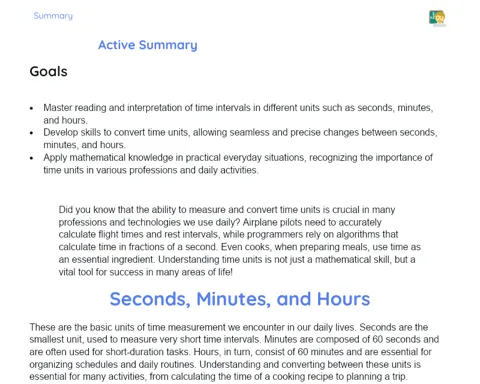Unraveling the Secrets of Cones: Practical Applications and Metric Relationships
Objectives
1. Calculate the height of a cone, given the radius and the length of the slant height.
2. Calculate the length of the slant height of a cone, given the radius and the height.
3. Understand the practical application of metric relationships in cones in the context of the job market, such as in engineering and architecture.
Contextualization
Spatial geometry is a fascinating area of mathematics that finds numerous practical applications in our daily lives. A notable example is the cone, a three-dimensional geometric figure that appears in various contexts, such as party hats, traffic cones, and even ice cream. Understanding the metric relationships of cones is essential for various professionals, from engineers to architects, as this knowledge is applied in construction projects, product design, and optimization of industrial processes.
Relevance of the Theme
Knowledge of the metric relationships of cones is fundamental in the current context, especially in fields such as engineering, architecture, and product design. These skills enable the creation of precise and efficient structures, contributing to innovation and solving practical problems in the job market.
Definition and Properties of a Cone
A cone is a three-dimensional geometric figure that has a circular base and a vertex. The line connecting the vertex to any point on the circumference of the base is called the slant height. The height of the cone is the perpendicular from the vertex to the base.
-
A cone has a circular base and a vertex.
-
The slant height is the line that connects the vertex to any point on the circumference of the base.
-
The height is the perpendicular from the vertex to the base.
Metric Relationships in Cones
The metric relationships in cones involve calculating the height, the radius of the base, and the length of the slant height. The formula for the slant height is g = √(r² + h²), where g is the slant height, r is the radius of the base, and h is the height of the cone.
-
The formula for the slant height is g = √(r² + h²).
-
To calculate the height, the inverse formula is h = √(g² - r²).
-
These relationships are essential to ensure precision and efficiency in real projects.
Practical Applications of Metric Relationships
Understanding the metric relationships of cones is applied in various fields such as civil engineering, architecture, and product design. These relationships enable the creation of precise and efficient structures.
-
These relationships are used in the construction of cooling towers and silos.
-
In product design, conical shapes are used to enhance functionality and aesthetics.
-
Engineers and architects utilize these relationships to ensure precision in projects.
Practical Applications
- The construction of cooling towers in power plants uses conical shapes for stability and space efficiency.
- Silos for grain storage are designed in a conical shape to optimize storage and facilitate material flow.
- The design of food packaging and laboratory equipment often employs conical shapes to enhance functionality and aesthetics.
Key Terms
-
Cone: Three-dimensional geometric figure with a circular base and a vertex.
-
Slant height: Line that connects the vertex to any point on the circumference of the base of the cone.
-
Height: Perpendicular from the vertex to the base of the cone.
-
Metric Relationships: Mathematical formulas that relate the height, the radius of the base, and the length of the slant height of a cone.
Questions
-
How can knowledge of the metric relationships of cones be applied in your future career?
-
In what way can precision in the calculations of metric relationships impact an engineering project?
-
What challenges do you envision when applying these metric relationships in a real project?
Conclusion
To Reflect
Throughout this lesson, we explored the fascinating metric relationships of cones, a topic that, at first glance, may seem purely theoretical but has numerous practical applications in the real world. Whether in the construction of efficient structures like cooling towers and silos or in the design of innovative products, understanding these relationships allows professionals in various fields to create precise and functional solutions. Mathematics, especially spatial geometry, is a powerful tool that helps turn ideas into reality, optimizing processes and ensuring the quality of projects. Reflecting on how these concepts are applied in the job market allows us to see the importance of studying and practicing mathematics in our academic and professional development.
Mini Challenge - Calculating the Slant Height: Practical Challenge
In this mini-challenge, you will apply the knowledge acquired about metric relationships in cones to calculate the slant height, the height, or the radius of cones given the other two measurements. This exercise aims to consolidate your understanding and demonstrate the practical application of these relationships.
- Form pairs or groups of three students.
- Each group will receive three different problems to solve, where they will have to calculate the length of the slant height, the height, or the radius of cones given the other two measurements.
- Use the formula for the slant height g = √(r² + h²) to solve the problems.
- Check your answers with a calculator and discuss with your group the importance of each measurement in the practical applications observed in the lesson.
- After solving the problems, each group should present their solutions and explain the reasoning used to arrive at their answers.



